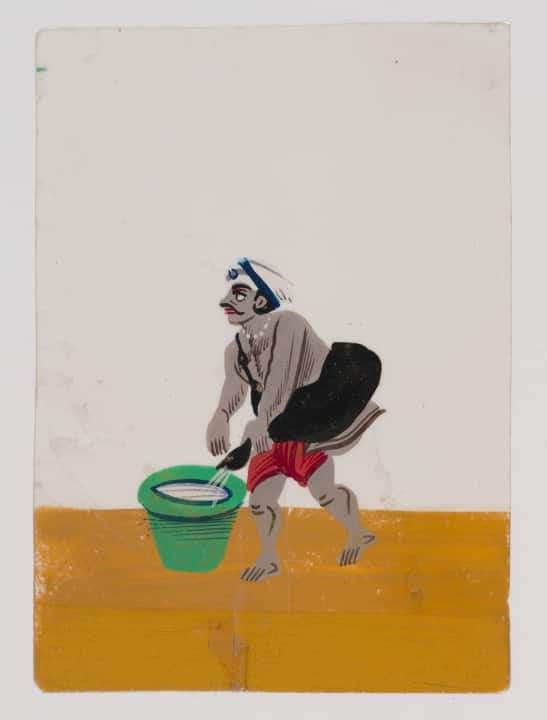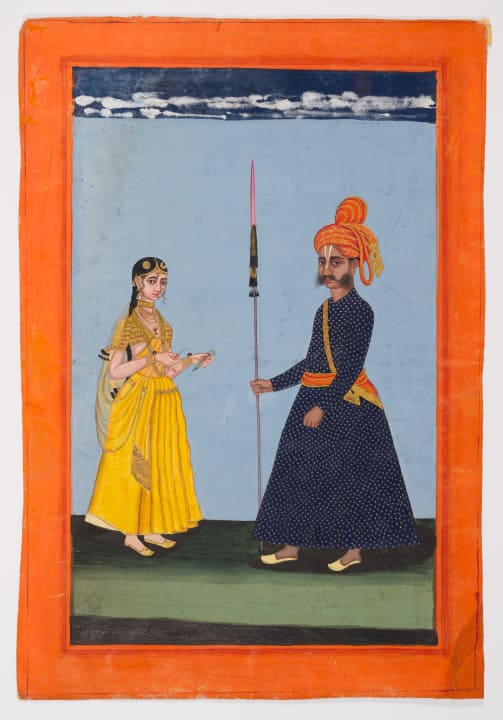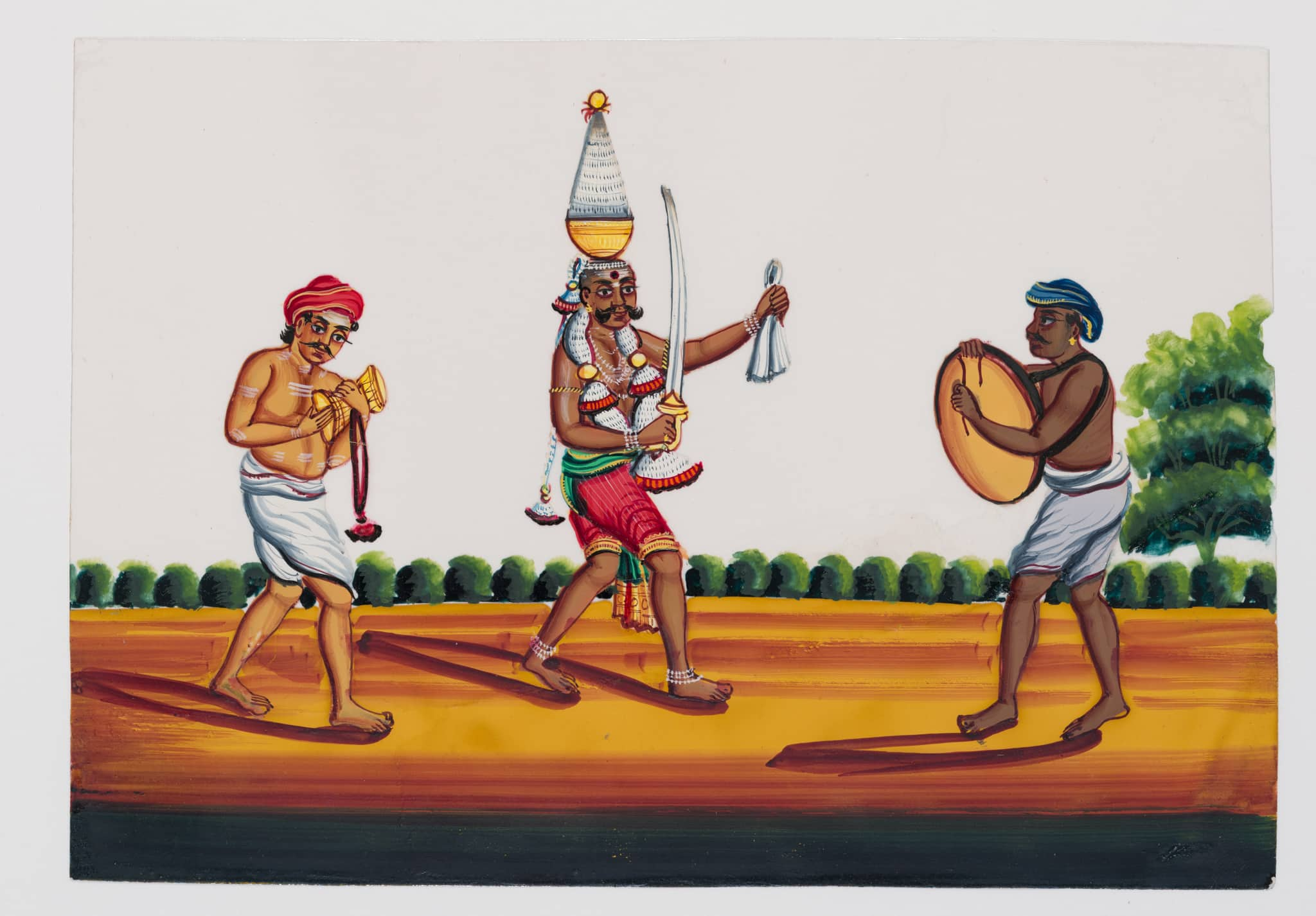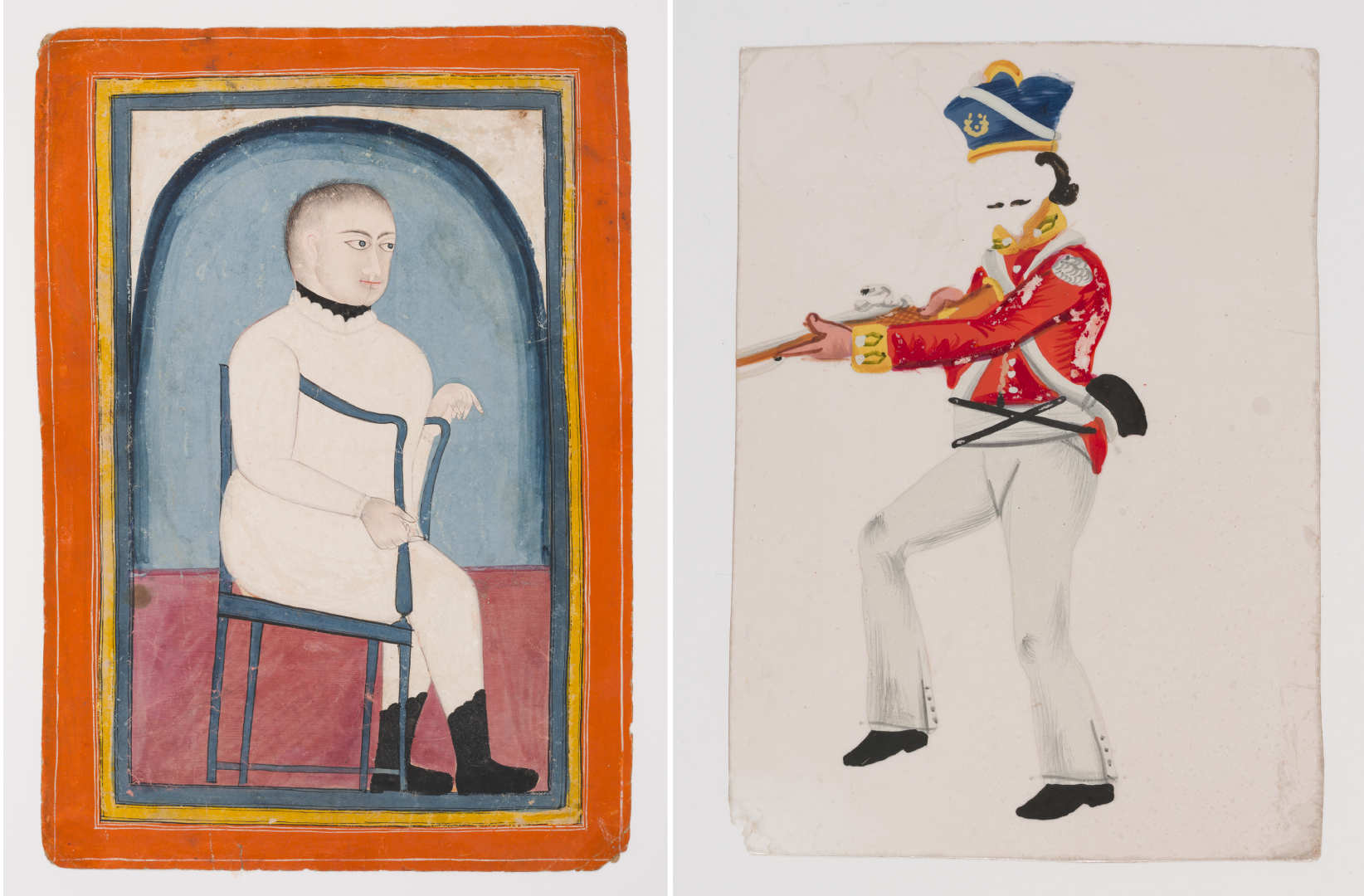



The trinkets we buy in overseas markets can sometimes tell a layered story. Consider the mica tablets that European travellers to India sent back home between 1750 and 1857. Each set of six or more tablets cost around 2 rupees 10 annas, and captured an array of Indian dress, people, occupations and faiths in watercolours of such vibrancy as was only possible to achieve on the translucent mica.
The tablets, some slightly smaller than an iPhone (at around 10.3 x 7.4 cm) and others as big as a small tray (37.1 x 25.3 cm, landscape), often had another intriguing feature: one of the tablets in the set depicted a floating head. Place one of the tablets with a particular style of dress and headgear on to the floating-head-tablet, and you get the whole picture. The translucency of the mica made this play possible.
One can almost imagine the curiosity these souvenirs must have piqued: relatively cheap, and immensely portable, they offered a way to take some sights and colours of the subcontinent back to England.
 Bhisti (Water Carrier), 19th century, Patna or Murshidabad, Bengal Presidency, Gouache on mica, H. 10 cm, W. 7 cm (detail). (Images via MAP Bengaluru)
Bhisti (Water Carrier), 19th century, Patna or Murshidabad, Bengal Presidency, Gouache on mica, H. 10 cm, W. 7 cm (detail). (Images via MAP Bengaluru)
Apart from their translucency, vibrancy, affordability and portability, the tablets piqued the colonizer-travellers' interest for another reason: Their obvious "Indianness". This impulse to fill museums - as well as private homes - with knick-knacks from around the globe, was as important a signal of being well-heeled and well-travelled then as it is today.
It helped (both the buyers and the painters) that the tablets could be made quickly, even on commission. "When you look at these mica paintings, they are fragile because of the materiality of it, but I wouldn't call them intricate because they were very quickly created," explains Khushi Bansal, research curator at the Museum of Art & Photography (MAP), Bengaluru.
 Paper continued to be used, even as mica paintings gained popularity. Pictured here: Warrior with his Wife, c. 1770, Tanjore (Thanjavur), Tamil Nadu, Gouache on paper, H.37.1 cm, W.25.3 cm. (Image courtesy MAP)
Paper continued to be used, even as mica paintings gained popularity. Pictured here: Warrior with his Wife, c. 1770, Tanjore (Thanjavur), Tamil Nadu, Gouache on paper, H.37.1 cm, W.25.3 cm. (Image courtesy MAP)
"It was the start of what later became mass-produced prints," Bansal says, adding that "we are mostly relying on travelogues; entries by officers of the Crown. We have no documentation of this, unfortunately. In the diaries these officers would write, we see how they described the usage of mica and the dazzling sight it would create because there was colour involved and also mica shines - it has that shimmery effect which really attracted the European traveller."
Production was centred around cities with relatively easy access to mica. So, Varanasi, Murshidabad, Patna and Tiruchirappalli - all had a burgeoning scene where artists would keep some sets ready to be sold from their ateliers as well as take commissions. The first known instance of painting the mica, though, has been traced back to Murshidabad where mica was used in the Tazia and lanterns for the Muharram processions. "They used to decorate the Tazia, which was a replica of the tomb of Imam Hussein, the grandson of the Prophet... (and) create lanterns with it (the mica) because (it is) a very good conductors of heat," Bansal says.
 The larger, landscape mica paintings are from south India. Pictured here: Mariamman Procession, 19th century Trichinopoly (Tiruchirappalli), Tamil Nadu, Gouache on mica, H. 10.7 cm, W. 15.2 cm, (Photo credit: Philippe Calia / MAP, Bengaluru)
The larger, landscape mica paintings are from south India. Pictured here: Mariamman Procession, 19th century Trichinopoly (Tiruchirappalli), Tamil Nadu, Gouache on mica, H. 10.7 cm, W. 15.2 cm, (Photo credit: Philippe Calia / MAP, Bengaluru)
In terms of the themes and scenes depicted, there is a regional influence but also an understanding of what the buying public might have wanted. So while the tablets from south India depict more Gods and religious or festive scenes, the ones from the east of the country have a bent towards the daily lives of the people. Military dress, Europeans and sepoys in uniform are another key theme in these tablets.
 (from left) Portrait of a European Man, 19th Century, Mewar, Rajasthan, Opaque watercolour on paper, Image: H. 25.8 cm, W. 16.2 cm; Overall: H. 32 cm, W. 22.5 cm; and a Sepoy, 19th century, Patna, Bengal Presidency, Gouache on mica, H. 10.3 cm, W. 7.4 cm (Images via MAP Bengaluru)
(from left) Portrait of a European Man, 19th Century, Mewar, Rajasthan, Opaque watercolour on paper, Image: H. 25.8 cm, W. 16.2 cm; Overall: H. 32 cm, W. 22.5 cm; and a Sepoy, 19th century, Patna, Bengal Presidency, Gouache on mica, H. 10.3 cm, W. 7.4 cm (Images via MAP Bengaluru)
Bansal explains that as royal patronage for artists and their workshops became less forthcoming, the artists "shifted into a new clientele completely. And with the shift in demand, they also had to adapt to new subject matter, material, time frames - because these new travellers didn't have the time to commission super-large-scale works either. That's why we see other materials as well, such as shell, ivory, mica and paper was continued on to be used in the creation of artworks. Especially mica paintings were typically stored in sets and they were sold in sets, and it again became a way for the British to document their new colony... if you look closely at the mica paintings, especially from Murshidabad and Patna, they're mostly ethnographic in nature, in the sense that it captures the trade and the occupation of the person being depicted. It has distinct class and caste connotations evident, because you don't know anything about the person being seen, but you do know the religion they practice, which community they are from and all that. It was essentially one of the earliest ethnographic studies of India that later developed into a bigger study."
There's no way of knowing how many such paintings or sets were sold, and the fates of those that wound up in private homes in the UK and elsewhere in the world. Mica tablets in the collections of museums like the Victoria & Albert Museum (they have around 700, by one account) in the UK and MAP, Bengaluru, however, serve as a reminder to us of this not-so-brief period in history when Indian artists created something so accessible and so compelling that the colonizer was persuaded to reach into his/her pocket and shell out rupees for a very Indian souvenir to take home and maybe pass down to future generations.
Discover the latest Business News, Sensex, and Nifty updates. Obtain Personal Finance insights, tax queries, and expert opinions on Moneycontrol or download the Moneycontrol App to stay updated!